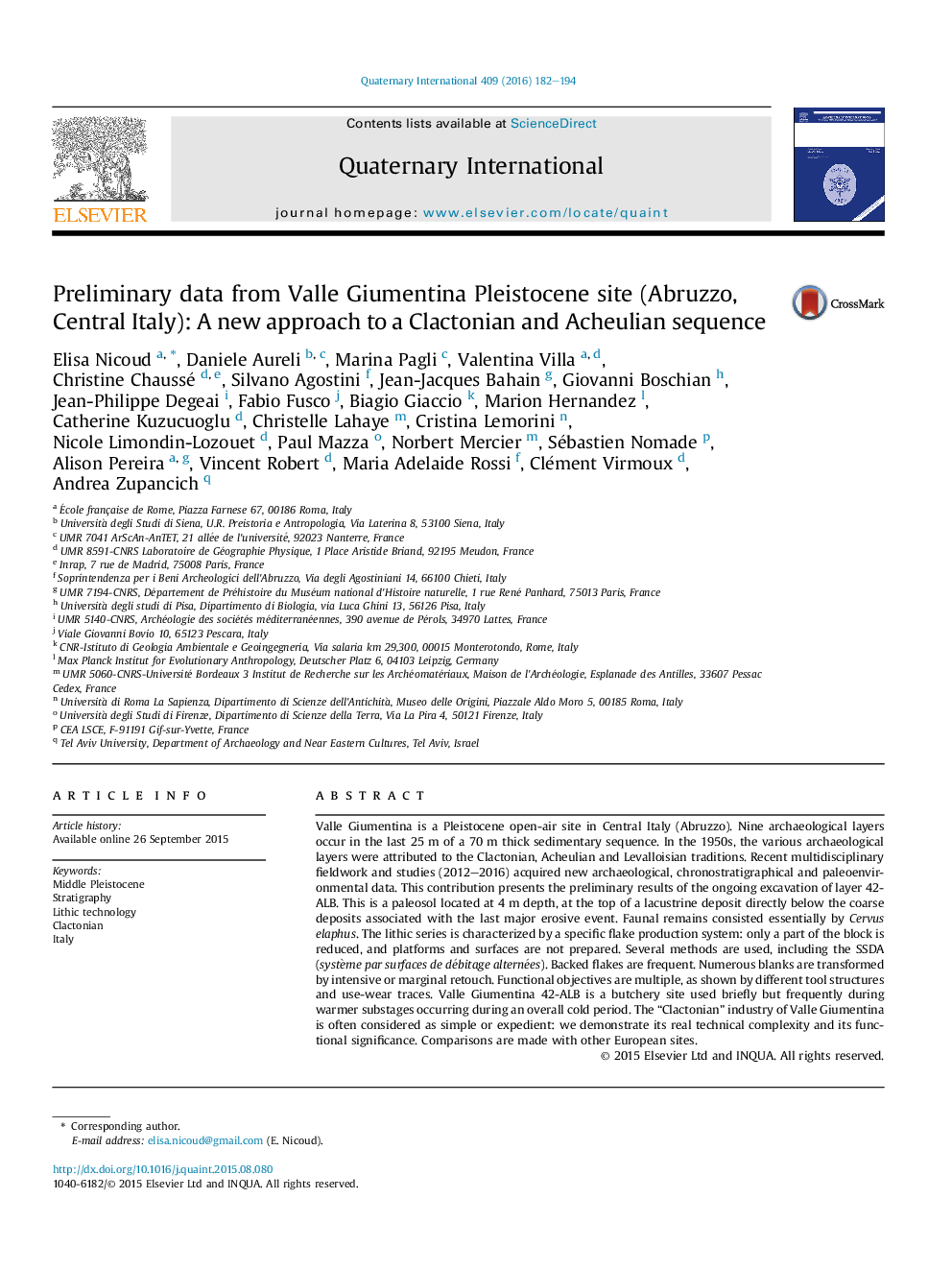| Article ID | Journal | Published Year | Pages | File Type |
|---|---|---|---|---|
| 1039915 | Quaternary International | 2016 | 13 Pages |
Valle Giumentina is a Pleistocene open-air site in Central Italy (Abruzzo). Nine archaeological layers occur in the last 25 m of a 70 m thick sedimentary sequence. In the 1950s, the various archaeological layers were attributed to the Clactonian, Acheulian and Levalloisian traditions. Recent multidisciplinary fieldwork and studies (2012–2016) acquired new archaeological, chronostratigraphical and paleoenvironmental data. This contribution presents the preliminary results of the ongoing excavation of layer 42-ALB. This is a paleosol located at 4 m depth, at the top of a lacustrine deposit directly below the coarse deposits associated with the last major erosive event. Faunal remains consisted essentially by Cervus elaphus. The lithic series is characterized by a specific flake production system: only a part of the block is reduced, and platforms and surfaces are not prepared. Several methods are used, including the SSDA (système par surfaces de débitage alternées). Backed flakes are frequent. Numerous blanks are transformed by intensive or marginal retouch. Functional objectives are multiple, as shown by different tool structures and use-wear traces. Valle Giumentina 42-ALB is a butchery site used briefly but frequently during warmer substages occurring during an overall cold period. The “Clactonian” industry of Valle Giumentina is often considered as simple or expedient: we demonstrate its real technical complexity and its functional significance. Comparisons are made with other European sites.
